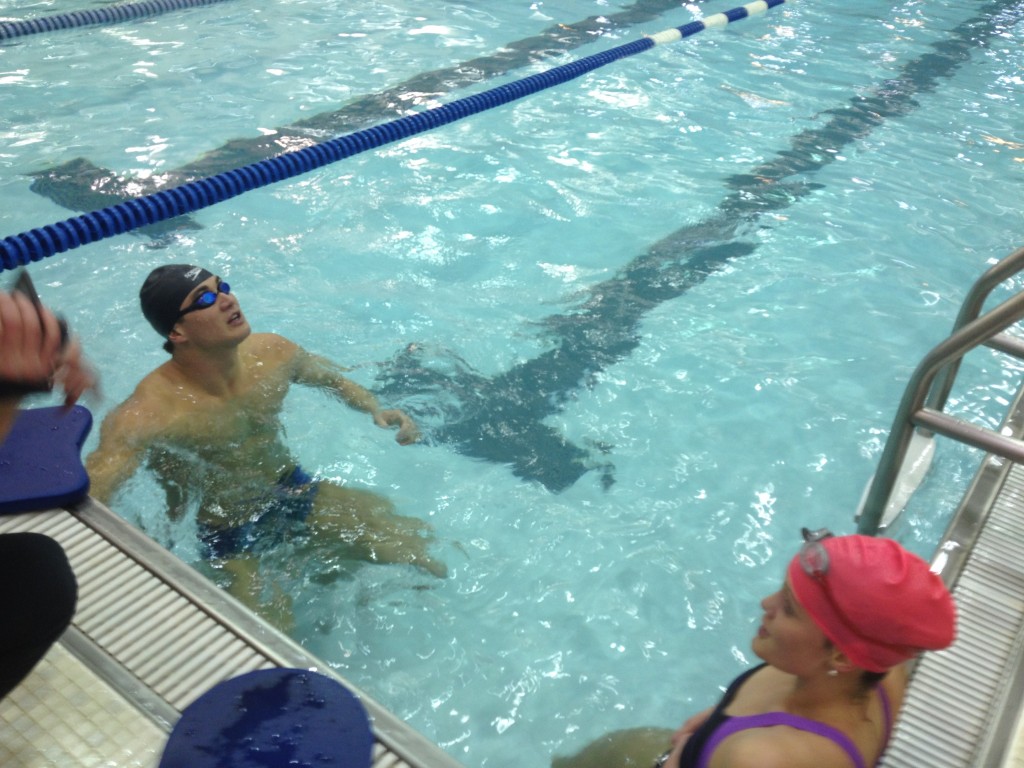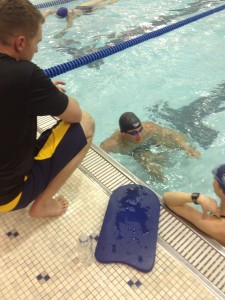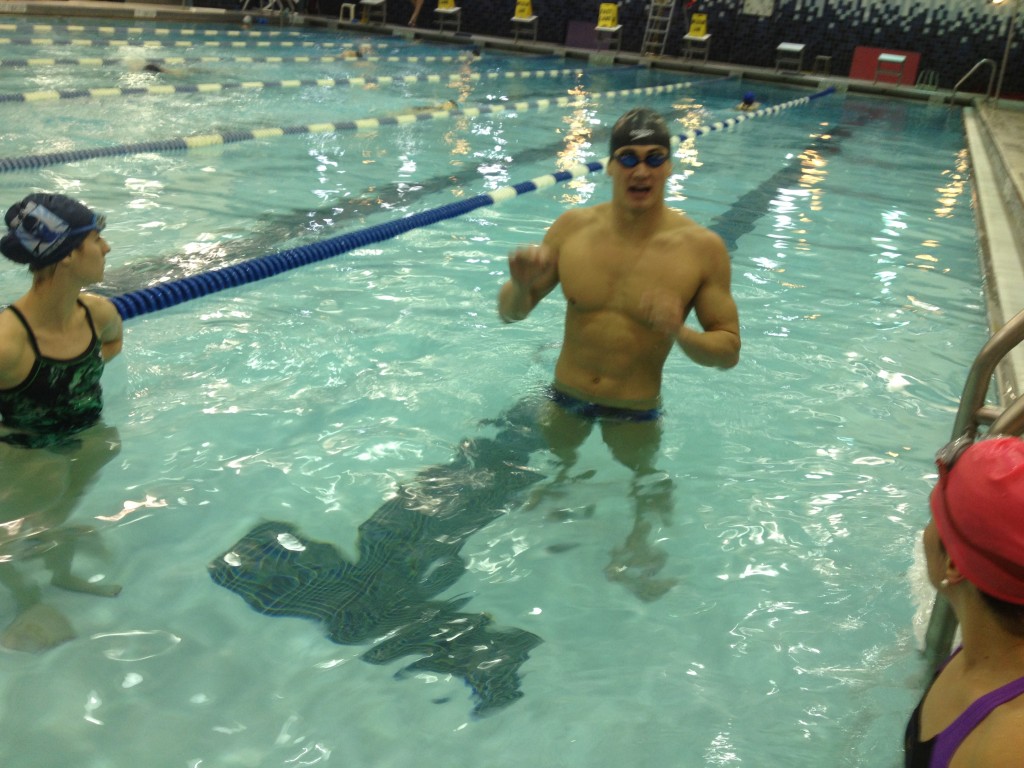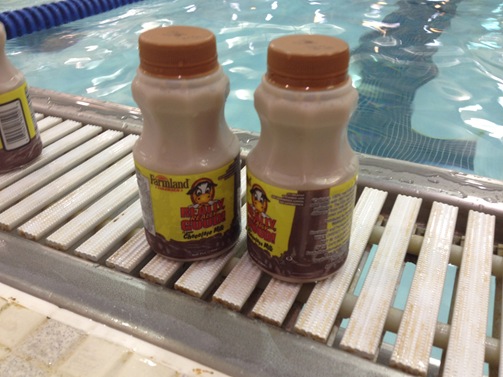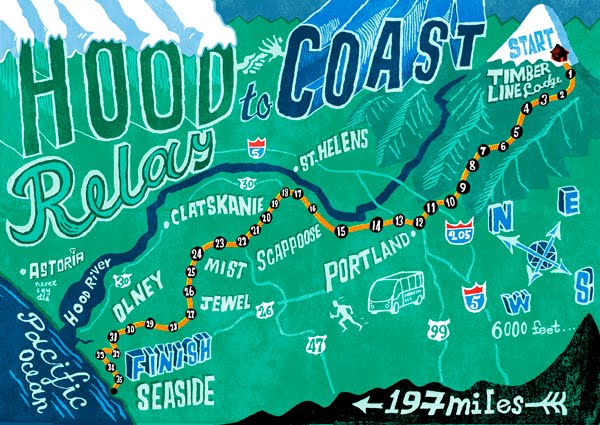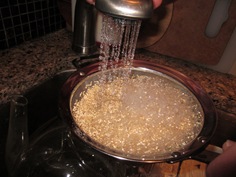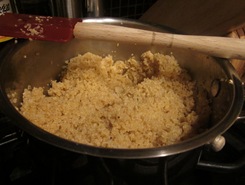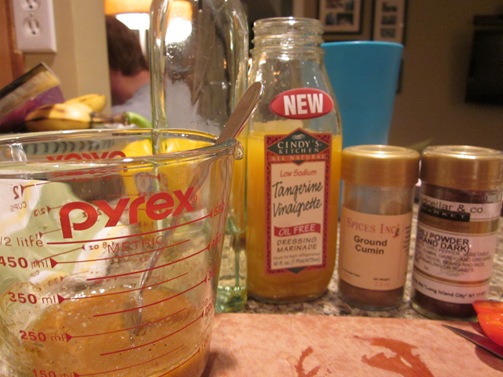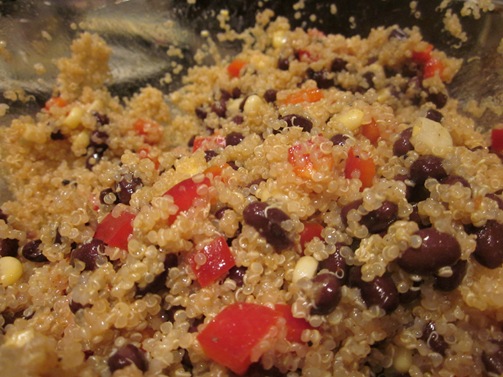If you’re a long time reader of this blog, you’ll know that I have a very love hate relationship with swimming. Every time I get in the pool, I dread it until I finish my first lap and then I love it all over again. I love the challenge of each lap. I love the humility I feel when I can barely breathe after only five minutes. I enjoy the peace and tranquility that I feel in the silence of the pool. But then there is the hate portion of it. I am not a fan of my very unbecoming one piece swimsuit. I’m not a fan of the fact that I haven’t had formal lessons in years and therefore feel that my form leaves something to be desired.
Therefore, when I received an email invite to interview Nathan Adrian, an Olympic gold medalist heartthrob, I was pleased to read the phrase, “interview him from the sidelines of the pool.” But, I also worried that I would show up in work clothes and everyone else would be in their suits, making waves with Nathan. 
Therefore, I emailed the team asking for clarification. Their response caused a great amount of anxiety for about 24 hours.
“Ashley, that’s a great idea. We’d love for you two to get in the pool with Nathan and do drills with him during the hour.”
You want me to wear a one piece swimsuit and attempt to follow in this guy’s wake?
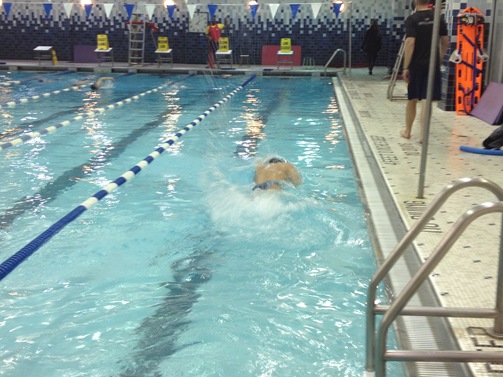 The plan for the event, sponsored by the REFUEL with Chocolate Milk team, was for me and Amy to participate in Nathan’s drills while receiving coaching from he and his coach and learning more about his training and fueling habits as he prepares for the 2012 London Olympics.
The plan for the event, sponsored by the REFUEL with Chocolate Milk team, was for me and Amy to participate in Nathan’s drills while receiving coaching from he and his coach and learning more about his training and fueling habits as he prepares for the 2012 London Olympics.
I was very open and honest at the beginning, making it clear to Nathan and his coach, Nick Folker, that I had very little experience in the pool and hadn’t swam in a few months. They laughed and said that if I could run marathons I could keep up. While his confidence was a bit of an exaggeration, I was amazed with how long I lasted. We did multiple drills after the warm-up laps including kicking and pulling drills, speed, and the super tough sculling drill.
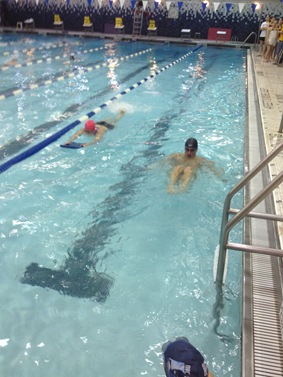 Both Nathan and his coach stressed to me the importance of reaching with my arms, as far in front of me as possible, to help propel me through the water as efficiently as possible. In addition, no surprise, but they recommended that practicing.
Both Nathan and his coach stressed to me the importance of reaching with my arms, as far in front of me as possible, to help propel me through the water as efficiently as possible. In addition, no surprise, but they recommended that practicing.
Nick believes that swimming could replace my recovery run during marathon training, or take place on the same day, to help loosen up my muscles and release tension. In fact, there is a forum on Runner’s World dedicated to swimming as part of cross training during marathon training. Many runners say that it helps build lung capacity, massage and loosens muscle, strengthens core muscles, and reduces injuries.
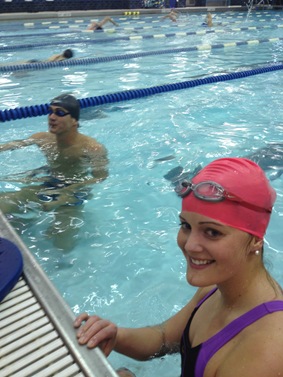 Don’t let that smile fool you. I was panting quite hard at this point after our second round of sprints, having been lapped by both Nathan and Amy. Oh wait, did I mention that the other blogger who joined me happens to be a distance swimmer who has completed an Olympic Distance tri in 2:25 and completed a 3:46 NYC Marathon. Yes, I was out of my league.
Don’t let that smile fool you. I was panting quite hard at this point after our second round of sprints, having been lapped by both Nathan and Amy. Oh wait, did I mention that the other blogger who joined me happens to be a distance swimmer who has completed an Olympic Distance tri in 2:25 and completed a 3:46 NYC Marathon. Yes, I was out of my league.
But, Nathan and Amy were great cheerleaders and we had a blast talking about his experiences balancing college (he graduates from UC Berkley this Spring), training for the Olympics, and a personal life. In addition, he was more than willing to talk about his training plan which includes many two a day workouts which can add up to 6 hours per day and refuels with chocolate milk, in and out of the pool.
Nick, who is currently not only Nathan’s coach but also the USA Swimming Trainer and Director at UC Berkley, shared a few RECOVERY tips so that next time I won’t feel quite as exhausted after a tough workout and my body won’t feel it the next day.
- Be sure to replenish your body within 20 minutes to 2 hour recovery window with electrolytes, protein, and carbohydrates. My favorite way to do this is though chugging chocolate milk since it has all the carbs, electorlytes, and protein my body needs.
- Exercises like yoga, and swimming are important for muscle recovery so your body can replenish energy stores and repair damaged tissues. Make sure the activity isn’t too vigorous.
- Be sure to include the following in your activity: cool down, stretch, foam roll, ice, and massage as needed.
Thanks to the REFUEL with Chocolate Milk team for this opportunity and for inspiring me to get back in the pool. Now what NYC friend is going to ensure I get back in the pool each week?
Question: Swimmer or not? If you are a swimmer what are some tips to improve? Do you use it as cross training?

